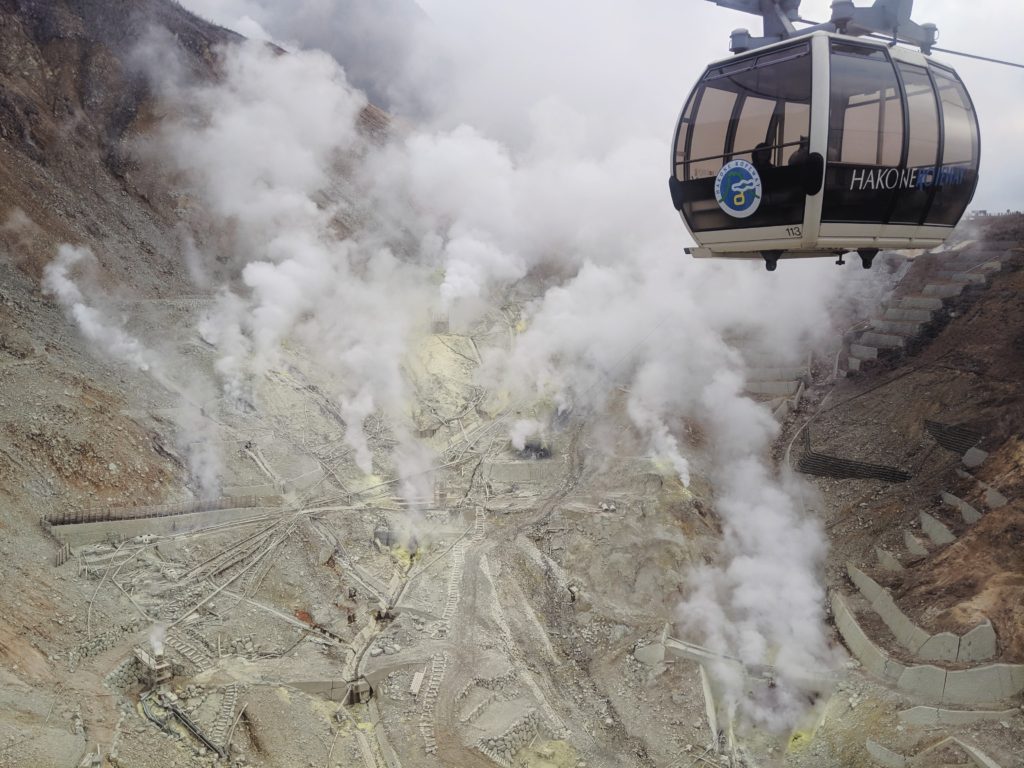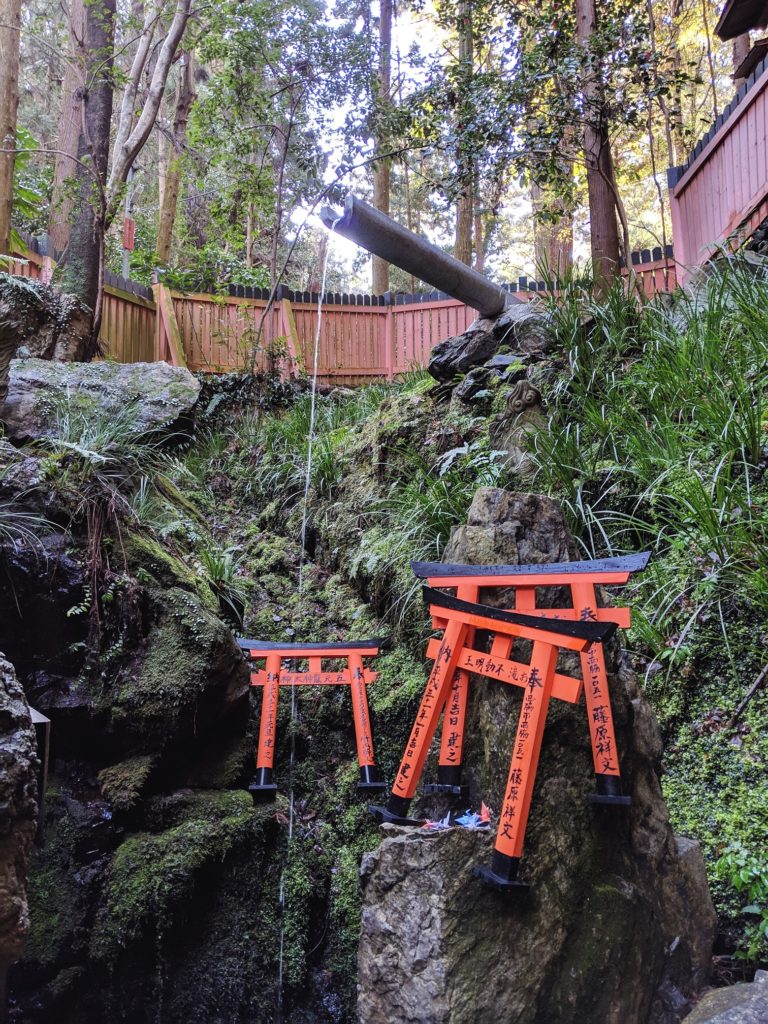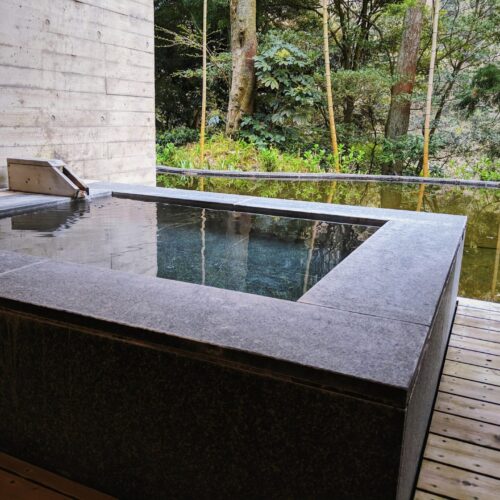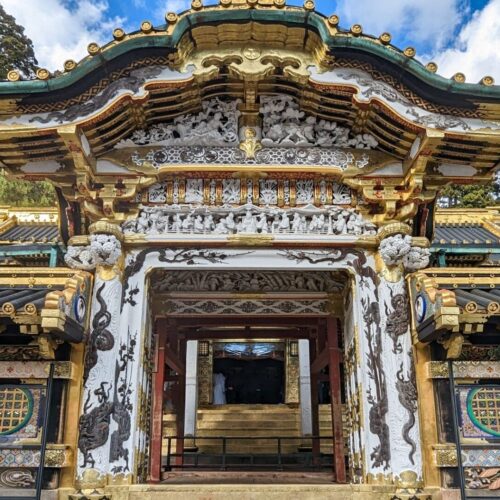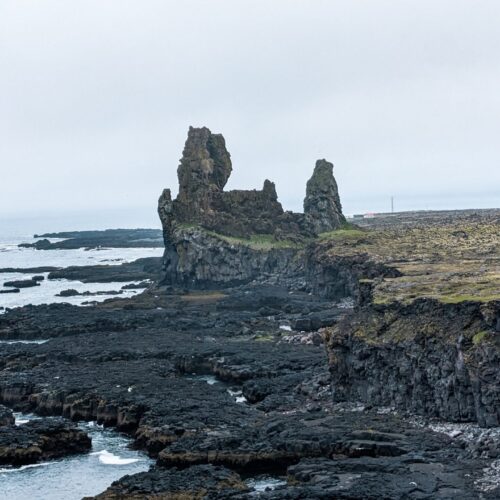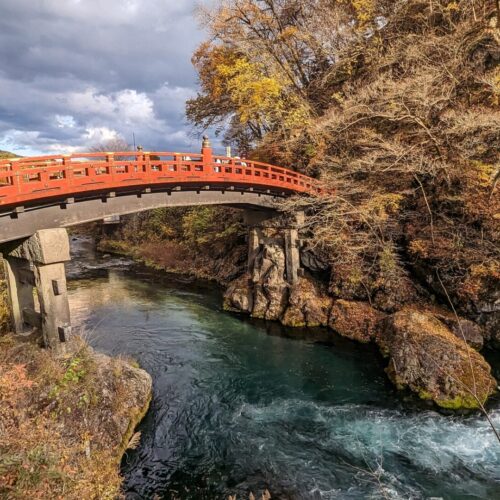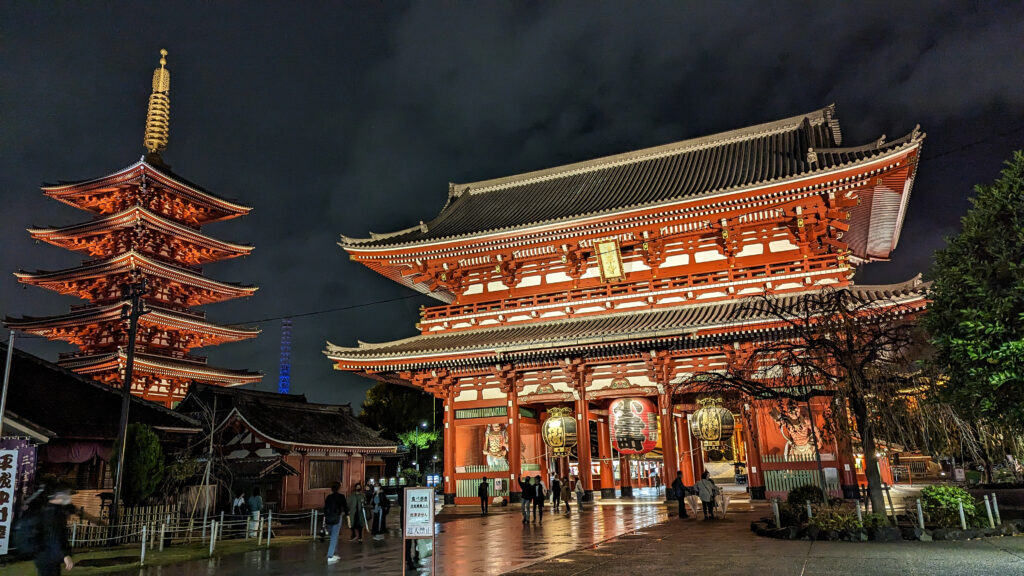
Japan is one of my favorite travel destinations and somewhere that constantly leaves me wanting to come back to travel and learn more. With an extensively rich history and fascinating culture, today Japan is a beautiful blend of traditional and modern. There are many stunning locals to visit, tons of delicious food to eat, and an abundance of unique experiences.
Dive into my basic two-week Japan itinerary that will help you hit many of the top destinations in Japan and hopefully inspire you to return and explore more!

Language: Japanese
While English is widely spoken in cities and tourist locations, knowing a few Japanese phrases and some Kanji is highly beneficial.
Currency: Japanese Yen (¥).
Japan is a cash society, and while more places in the city are accepting cards, you should always carry cash during your travels in Japan. ATMs are available in 7-Eleven for cash withdrawal.
Tip: bring a coin purse; you will likely be carrying a lot of change.
Major Airports:
Tokyo: Narita International Airport (NRT) & Haneda Airport (HND)
Osaka: Kansai International Airport (KIX)
Best Time To Visit: March to May & October to November
During this time, there is little rain, and temperatures are mild. The winters are cold but manageable with proper clothing. Avoid the summer if possible due to high temperatures and high humidity, with typhoon season peaking in August and September.
If you visit in late March or early April, you will see the cherry blossoms. If you visit in mid-November, you will see the vivid fall colors.
JR Rail Pass
The JR Rail Pass is a train pass that foreign tourists can purchase that covers most JR trains, including the Shinkansen, for a specified period. It’s often the most cost-effective way to visit much of the country.
The JR Rail Pass is offered for green and standard cars with three duration options; 7-day, 14-day, and 21-day. The 7-day is the most commonly used and is what I would suggest for this two-week itinerary. To get the most bang for your buck, you must be riding the shinkansen, so it does not make sense to pick up a 14-day pass only to use it on local trains for half of the duration.
When you pick up your pass, you can specify the date on which the pass activates. It’s also an excellent time to make reservations for specific trains/times, especially if you are visiting during a heavy tourist season. Getting on your preferred train will make your trip run more smoothly.
Visit the Japan Rail Pass website for more info about the pass.
Update: October 2023: The JR Rail Pass had a major price increase, effective October 2023. The pass is no longer as cost effective as it once was. It still may be useful for your trip, but make sure you take into account the price increase for the pass versus using individual shinkansen tickets!
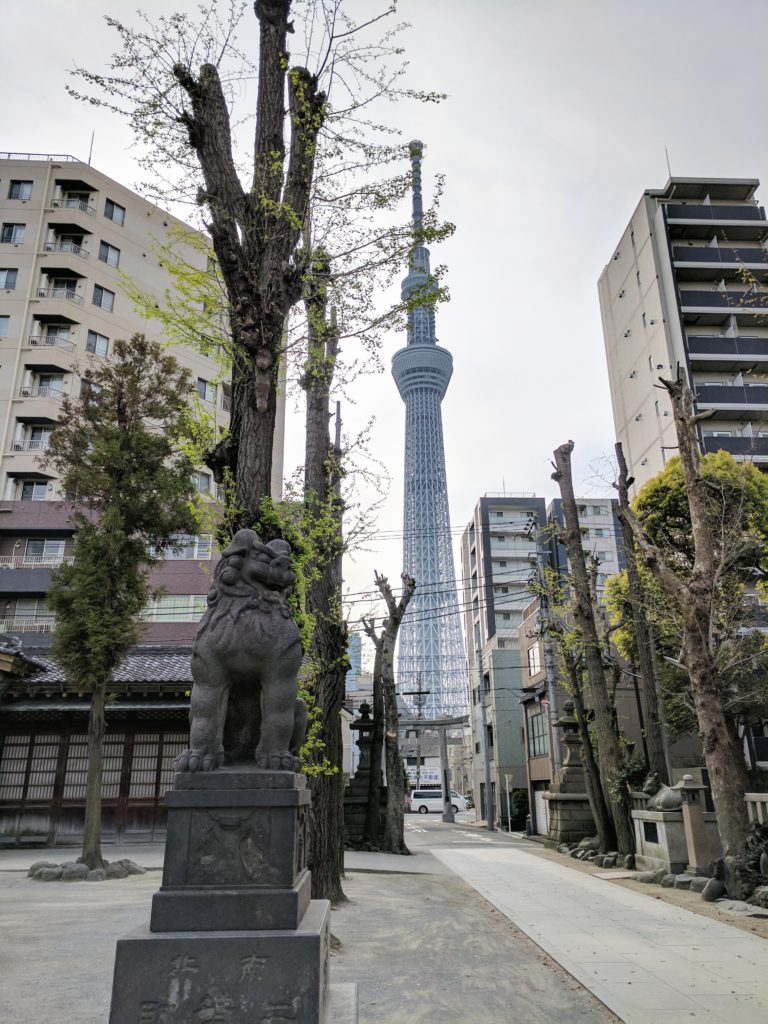
Detailed Itinerary
Tokyo – 5 or 6 days
The capital of Japan, Tokyo, is the most populated metropolitan area in the world. A captivating mix of modern and traditional, with 23 wards, there is an endless amount of adventure. You could spend an entire two weeks just exploring Tokyo.
The key to exploring Tokyo is to group your travels by area. The easiest way to do this is to look at the JR Yamanote line that makes a giant loop around Tokyo. Pair areas near each other or complement each other in terms of transportation.
Asakusa, Sky Tree & Ueno
I consider these three locations the perfect first day in Tokyo. You will get a nice introduction to historical and modern Japan and get used to the train system!
Asakusa is home to Sensoji, Tokyo’s oldest temple, and a must-see while in Tokyo. Don’t forget to visit the Asakusa Tourist Culture Information Center for a spectacular view or Nishi Sando for some shopping.
Take a relaxing walk over to the Skytree through Sumida park. Visit the Sky Tree observation deck or shop through the attached mall.
Spend the afternoon in Ueno soaking in Ueno park and one of its many museums. If you visit in the spring, keep an eye out for the many cherry blossom trees! Outside the park, you can stroll down Ameyokocho, a market street with tons of shopping and tasty food!
Looking for more detail on how to spend your first day in Japan?
Check out: Your First Day in Tokyo
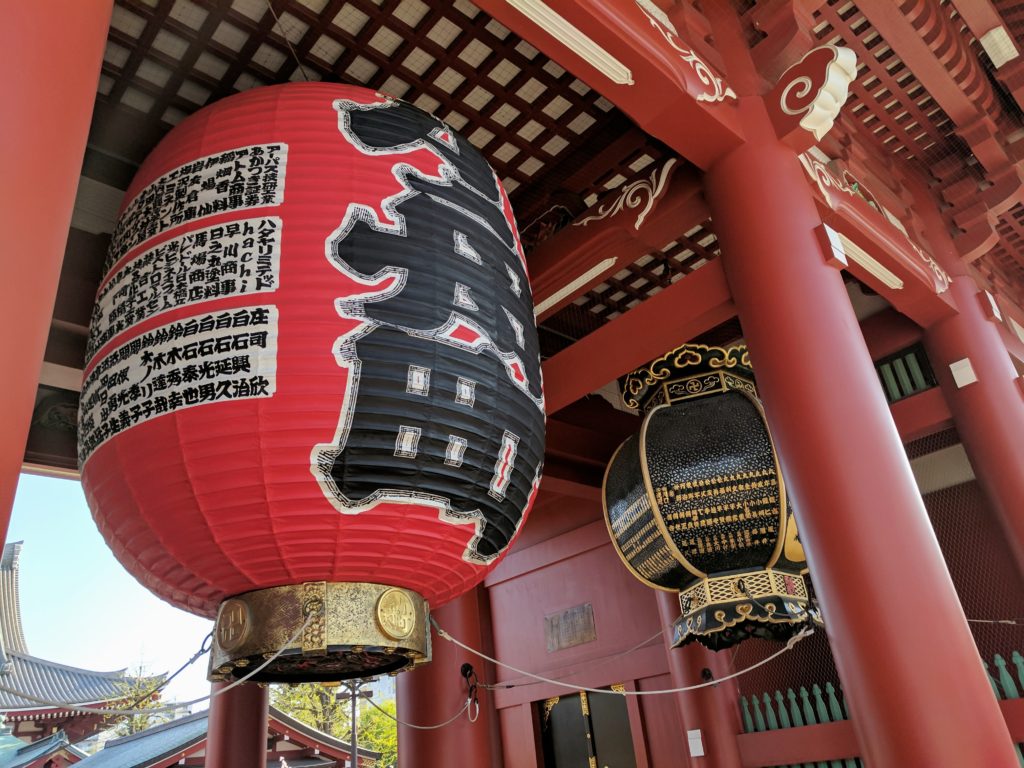
Akihabara, Tokyo, & Odaiba
Akihabara is famous for its many electronic shops and has become popular as the center of Otaku culture. This is THE destination for anime, manga, and video games. Try to visit Akihabara on a Sunday when the street is closed, and you can freely walk around between the buildings. Though the main road has changed a lot in recent years, don’t pass up a visit, it’s a fun experience.
In the commercial center of Tokyo, you will find Tokyo station, which has lovely architecture and quite a bit to do and see inside, such as Kitchen Street and Ramen Street. You can find the East Imperial Gardens, Ginza Shopping District, and the Pokemon Cafe/Pokemon Center, a short walk from Tokyo station. If you travel southeast of Tokyo Station, you can visit the Minato area, which is home to the Tokyo Tower and Roppongi. Visit Minato at night to see the Tokyo Tower lit up and experience the nightlife in Roppongi!
Odaiba is a man-made island featuring shopping and entertainment. Tourists likely know Odaiba as the location of the giant Gundam. However, there is plenty to do and see in Odaiba. Check out Aqua City for shopping and a ramen theme park or Decks Tokyo Beach, an excellent location for kids with indoor theme parks and museums.
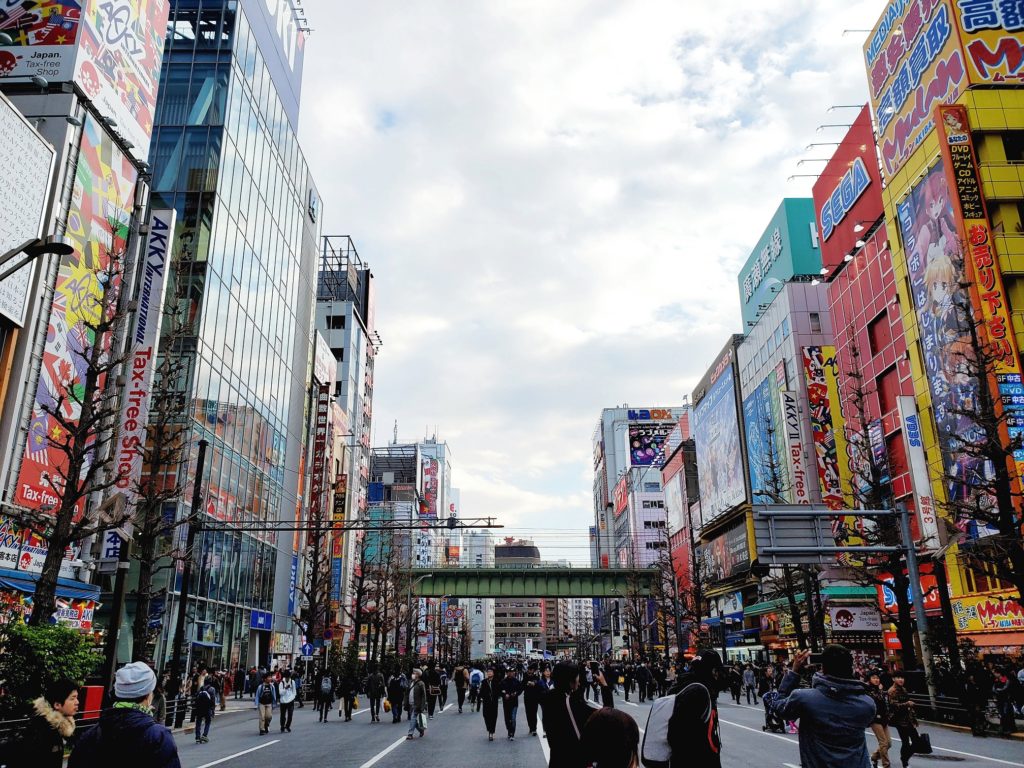
Harajuku & Shibuya
Harajuku and Shibuya are great to pair with each other as they meld together, and you can easily walk between the two areas. Both areas are part of the Shibuya ward.
Start your day in Harajuku by visiting Yoyogi park and Meiji Jingu, located in a large forest area just behind Harajuku Station. In the late morning, make your way down , the street famous for Japanese street fashion with boutiques catering to youth culture. Takeshita can get extremely busy, so it’s best to arrive right around when the shops open, so you aren’t swimming in a sea of people!
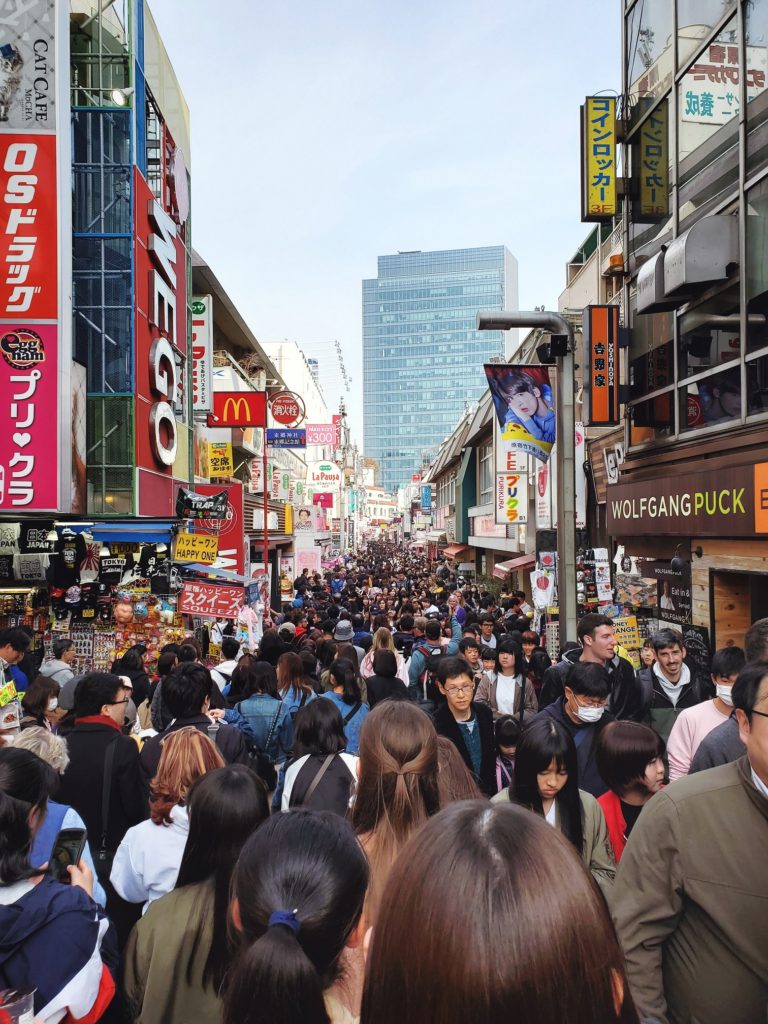
Make your way south toward Omotesando and Cat Street, which winds its way towards the Shibuya shopping district. There is a ton of shopping to be done in both of these areas. The walk down to Shibuya is quick, and I suggest walking instead of taking the train!
Shibuya is most well known for the Shibuya Crossing, aka The Shibuya Scramble. The evening is the best time to visit this location if your want to see the full chaotic glory of the crossing. Many places around the area offer a birds-eye view of the crossing. Starbucks is the easiest but also the busiest. Don’t miss checking out the Hachiko Statue near the station while you are in the area. Shibuya is also a bustling nightlife area, don’t pass up the opportunity to hang out here at night and check out some of the delicious restaurants and shops. Shibuya is also a great place to give Pachinko (Japanese slot machines) a try.
Shinjuku & Ikebukuro
Home to the world’s busiest railway station, there is so much to do in the Shinjuku area, especially if you are into nightlife. Visit the Shinjuku Gyoen Gardens for a relaxing stroll or ascend to the Tokyo Metropolitan Building‘s free observation deck for a stunning view of the city. Drink your way through Golden Gai or party the night away singing Karaoke. Keep an eye out for Godzilla as you walk around Shinjuku!
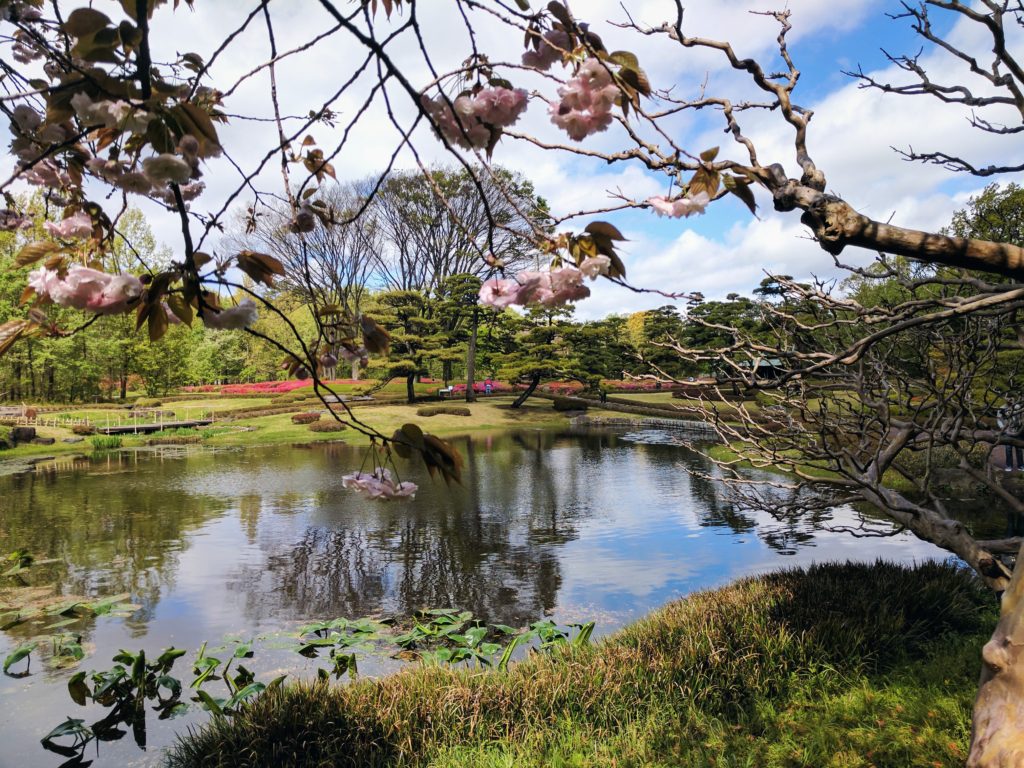
A short train ride from Shinjuku, Ikebukuro is another bustling city center with tons of shopping and restaurants. Check out Sunshine 60 and Sunshine City for endless shopping and an aquarium. If you are into anime and manga, head to Otome Road for otaku shopping targeted at women.
Mitaka (Studio Ghibli Museum)
The Studio Ghibli Museum can be challenging to get tickets to visit, but it’s completely worth the effort. The exhibit is housed in a quirky, colorful building with an accompanying café. Overall it is a captivating experience and a fun look into the art of Ghibli.
Mitaka is a little bit outside of the “main” area of Tokyo. I suggest visiting the Studio Ghibli Museum in the morning when the museum opens and pairing this day with Shinjuku.
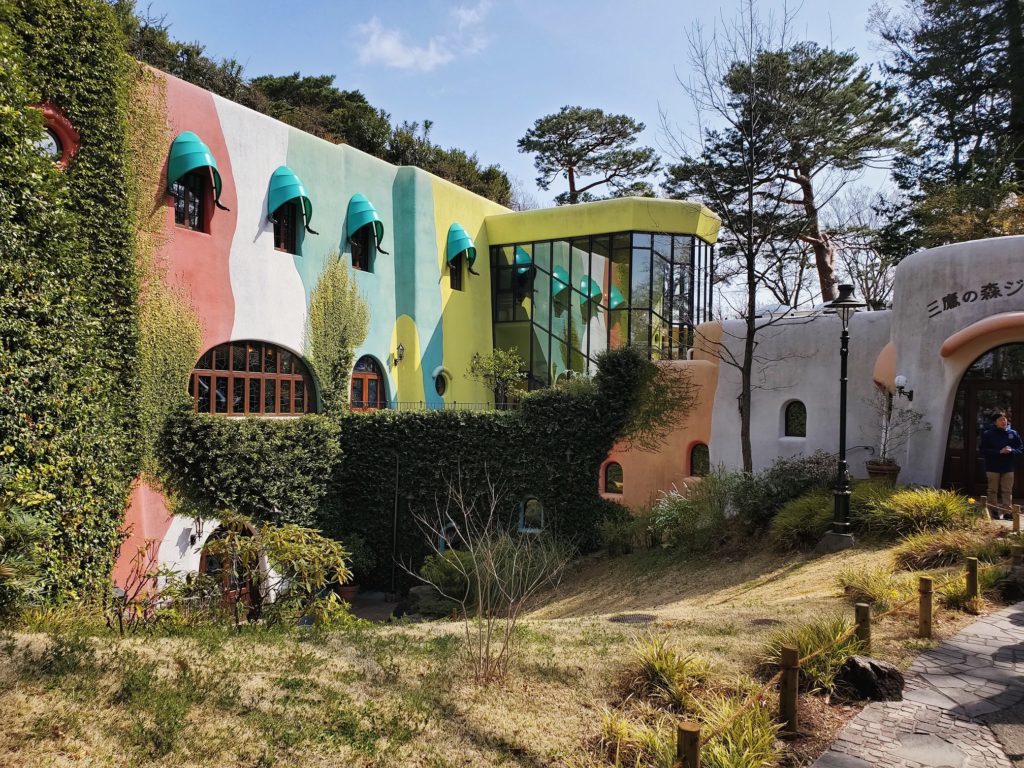
Tokyo Disney Sea
Visiting Tokyo Disney is entirely optional and based on your preference. You can always take a day trip somewhere else in place of Disney. However, I always suggest visiting Disney Sea as it’s a unique Disney park with great rides and tasty food. It’s also a change of pace from visiting endless cities and shrines. Additionally, you could pair Disney in the morning and afternoon with a night out in Shinjuku.
If you are a big Disney fan and the park is a must-visit, you can also add an extra day to visit the Tokyo Disneyland park!
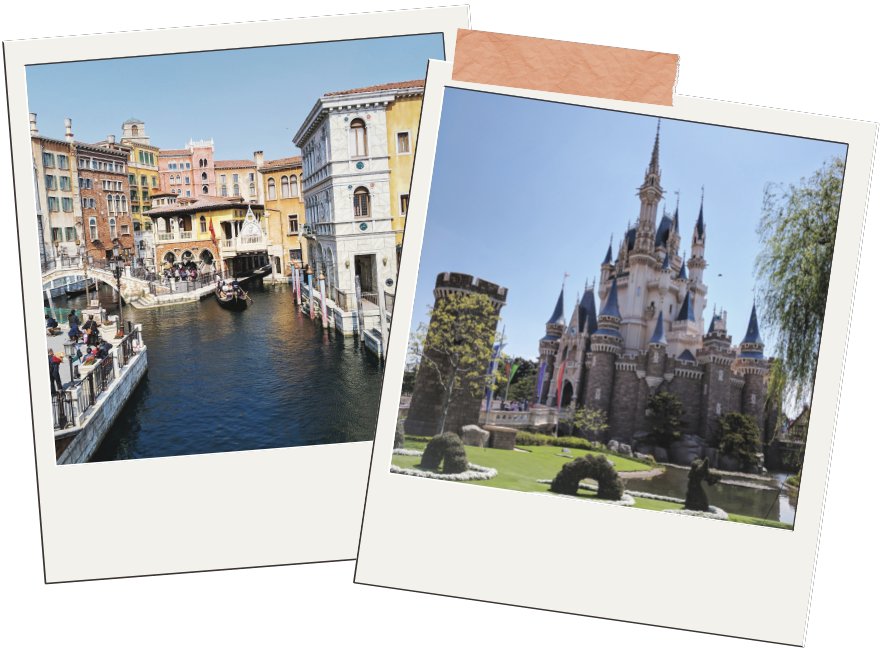
Day/Overnight Trips – Kamakura, Kawagoe, & Nikko
There are a ton of easy day trips not far from Tokyo. These day trips are great options if you aren’t interested in Tokyo Disney.
- Kamakura
Fifty minutes from Tokyo, Kamakura is a coastal resort town with an abundance of festivals, shrines, and temples. Check out the Great Buddha of Kamakura at Kotoku-in, a giant bronze Buddha statue - Kawagoe
One hour from Tokyo, Kawagoe is often referred to as Little Edo due to the number of historical buildings. Check out Confectionary Row for dozens of traditional Japanese sweet shops, and don’t forget to visit Kurasukuri Street, which is home to traditional warehouses in Edo period style. - Nikko (Nikko Travel Guide)
Two and a half hours from Tokyo makes Nikko the farthest of these day trips and may warrant an overnight stay. Nikko is in the mountains north of Tokyo and boasts stunning scenery and hot springs. Visit Toshogu, an ornately designed shrine built for Tokugawa Ieyasu.
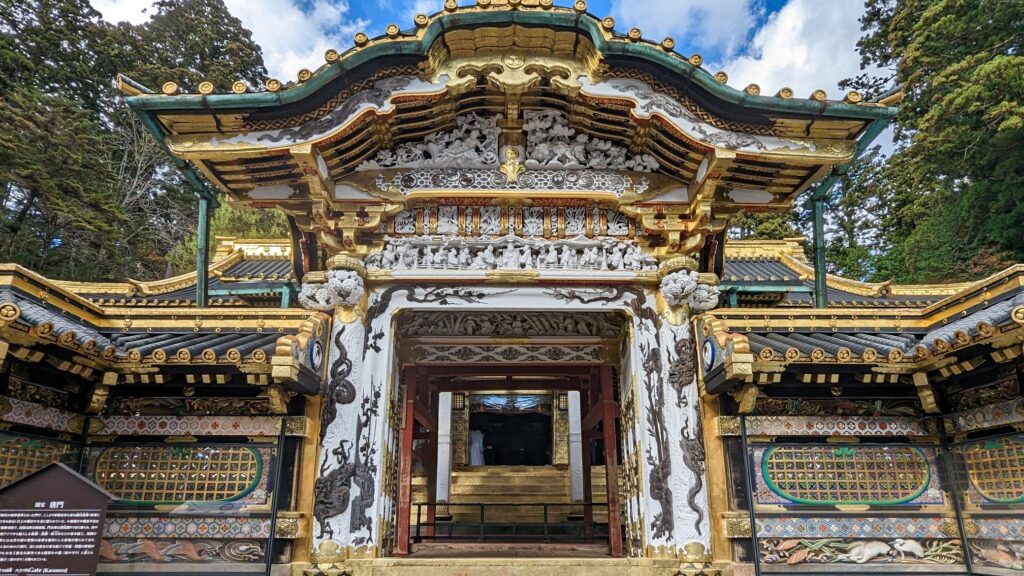
Hakone – 1 Day
Hakone is the perfect 1-day pit stop between Tokyo and Kyoto. Stopping in Hakone will allow you time to slow down and breathe while enjoying some beautiful scenery. Catch a glimpse of Mount Fuji while riding a pirate ship, book a ryokan, and soak in an onsen.
You can make this stop as busy or relaxing as you wish. There are plenty of activities in Hakone to keep your adventure going strong.
Looking for more info on visiting Hakone?
Check out my Hakone Travel Guide
Kyoto – 3 Days
Kyoto is a major tourist destination, home to some of Japan’s most culturally significant locations. Once the capital of Japan, Kyoto is rich in traditional Japanese culture with its numerous temples, shrines, and palaces.
Similar to Tokyo, you should focus your days on specific areas of Kyoto; jumping around between the north and south is going to waste your time. Grouping your destinations is key to visiting all of Kyoto’s fantastic locations. Another important tip is to start your day early to avoid crowds. Many places in Kyoto offer a better experience with a lighter crowd.
Fushimi Inari
Fushimi Inari is in the south and somewhat separate from the rest of the significant locations to visit in Kyoto. However, Fushimi Inari is one of if not the top can’t miss spots during your time in Kyoto. You can add this stop to the morning or evening of whatever day seems the best fit for your itinerary. I prefer to visit in the morning before it gets busy and hike to the top; by the time you come down and finish up your visit, it will start to get very busy.
There is a nice lookout point midway if you aren’t interested in the whole climb, and you will still have a great experience walking through a bunch of torii gates. If you have time, I suggest the entire hike, it isn’t easy, but it is gratifying.
Downtown & Central Kyoto
The center of Kyoto is home to some of the most well-known sites in Kyoto!
Right in the heart of downtown Koyo, stop by Nishiki Market, a long narrow shopping street home to many restaurants and shops. While wandering through the Market, you will find many Kyoto specialties and delicious snacks.
Leave downtown and visit Gion and Kyomizu-dera to immerse yourself in the history of Japan. Gion is a famous entertainment area dating back to the Sengoku period, home to the geisha.
Head south from Gion for another popular area of Kyoto. After a short walk up the shop and restaurant-lined Kiyomizuzaka, you will be greeted by shrines and temples. Kiyomizu-dera is located beyond these shrines and is known for its stunning scenic views!
A trip to Nijo Castle may be the surprise highlight of your time in central Kyoto. A stunning castle built in 1603, it’s surrounded by stone walls and motes and boasts a beautiful garden. The main Ninomaru Palace is open to tour and is a breathtaking look at the Edo period in Kyoto.
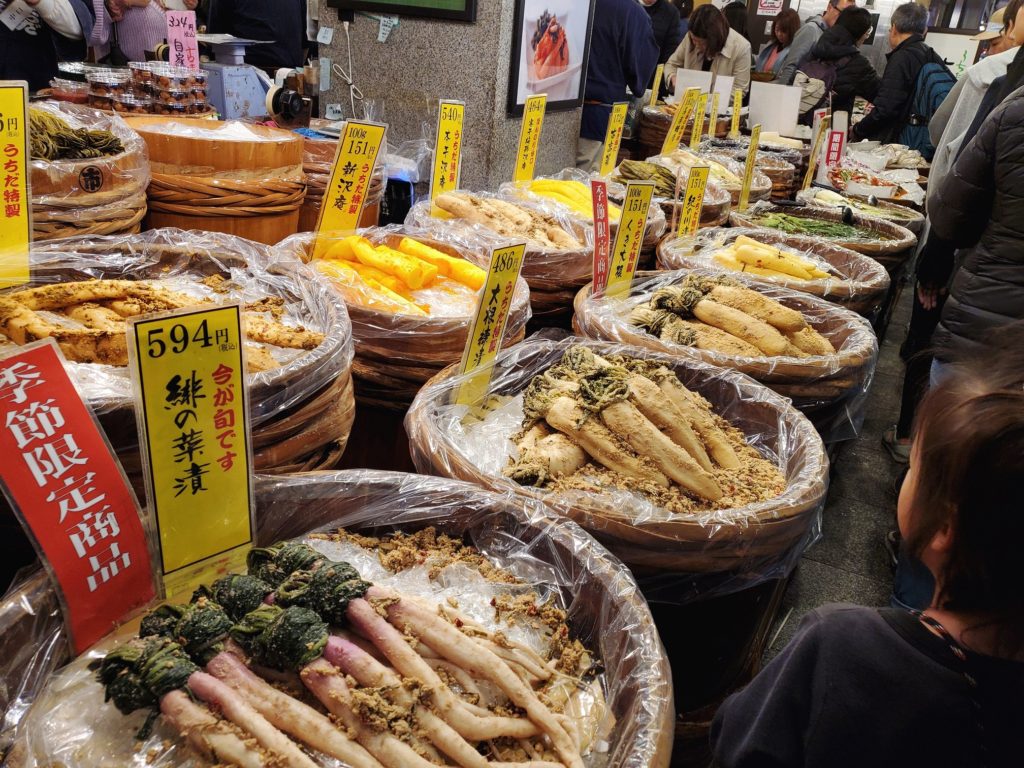
Eastern Kyoto
Heading farther to the east, you will find the famous cherry blossom canal, Philosopher’s Path. Hundreds of cherry blossom trees line this path making it the ideal location for cherry blossom viewing! There are a variety of shops, restaurants, and shrines along the path.
At the start of the Philosopher’s Path, you will find Ginkakuji, also known as the Higashiyama. While Ginkakuji means Silver Pavillion, the buildings aren’t actually covered in Silver. Instead, you will find a sprawling landscape with beautiful moss and sand gardens.
Northern Kyoto
If you make your way to northern Kyoto, you will find the famous Arashiyama. The area is full of temples and shrines but is probably most well known among tourists for the bamboo grove. If you are interested in the hike up Mt. Arashiyama, you will find the Arashiyama Monkey Park, home to over 100 Japanese macaque monkeys.
Unlike the silver pavilion, Kinkakuji, the gold pavilion is actually covered in gold leaf. The temple boasts a stunning exterior that is like no other temple in Japan. While you can’t enter the gold pavilion, you get a spectacular view across the pond. Many other areas at the temple, officially known as Rokuonji, are available to tour.
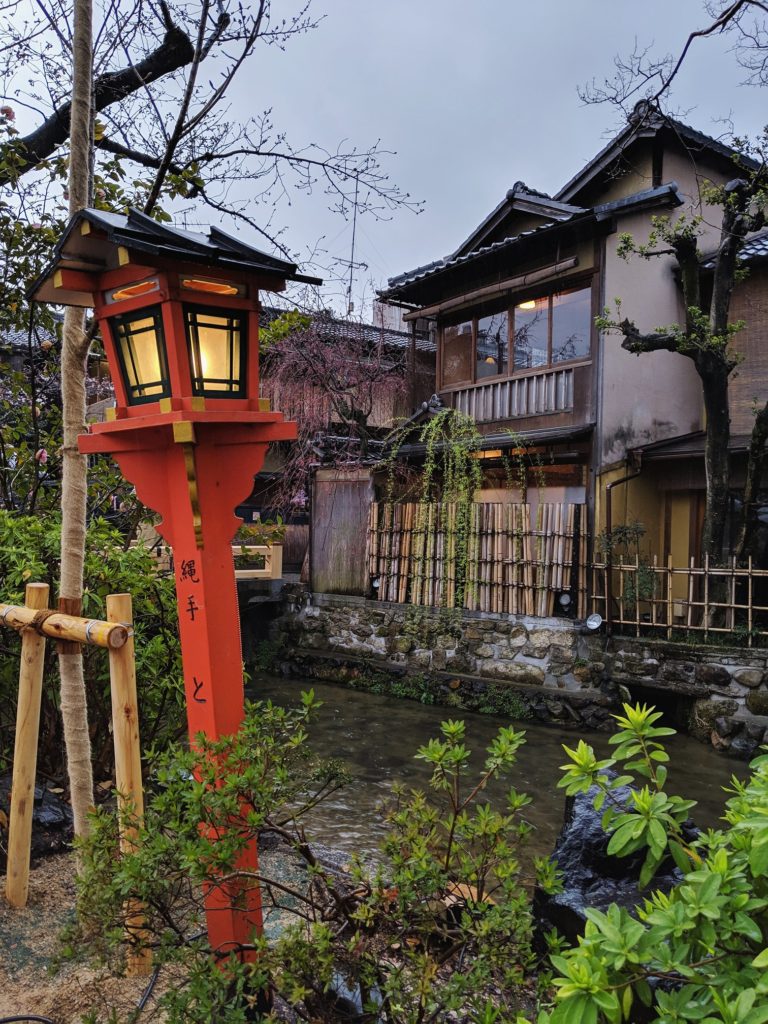
Hiroshima – 2 Days
Downtown Hiroshima
Visiting most must-see locations in downtown Hiroshima is an easy one-day experience. There are local buses and trams to hop on and off to get around, but honestly, you can hit all locations by walking a small loop starting and ending on Peace Memorial Boulevard.
Spend your first day in Hiroshima visiting Peace Memorial park and taking in all it offers, such as the Peace Memorial Museum. Across the river, you can see the Atomic Bomb Dome.
A short walk from the park is the gorgeous Hiroshima Castle, which also doubles as an excellent location for cherry blossoms. Heading to the east, you can find Shukkeien, a relaxing garden with koi ponds and tea shops.
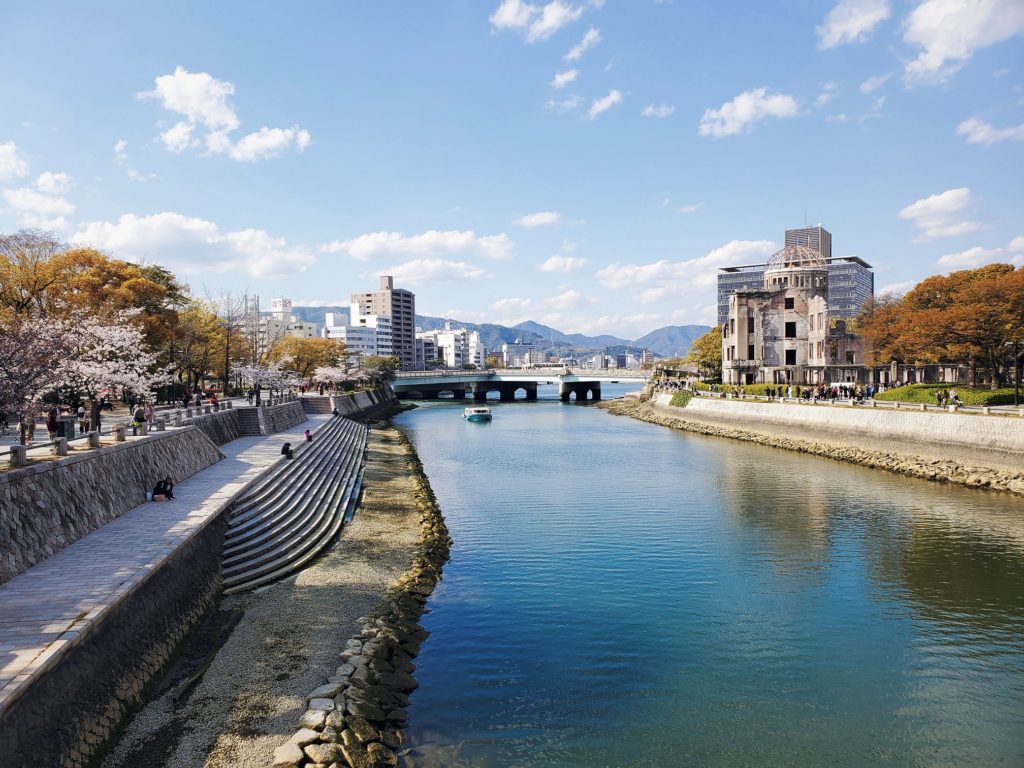
Miyajima Island
Miyajima Island is a short trip train/ferry from Downtown Hiroshima and offers a day-long experience. Pick up a goshuin at Itsukushima Shrine, visit the floating torii gate while the tide is out, or hike up Mount Misen for a spectacular view of Hiroshima bay. You can also opt to stay the night on Miyajima island in a ryokan and explore the island with quieter crowds.
Looking for more info on visiting Hiroshima?
Check out my Hiroshima Travel Guide
Osaka – 2 Days
Osaka is a bustling metropolitan hub full of entertainment and famous landmarks. An extensive railway system in Osaka makes it easy to travel between the city’s major stations. While many of the key destinations in Osaka aren’t as neatly grouped as Kyoto and Tokyo, the ease of transportation makes this issue negligible!
Kita/Umeda
The Umeda area is one of the major downtown areas of Osaka. The JR Osaka station can be found here.
You can visit Hep Five, a giant complex full of shopping and restaurants outside the station. On top of the building, you can find a massive Ferris Wheel that offers an incredible view of the city. This one isn’t for the faint of heart!
If the Ferris Wheel isn’t for you, head to the Umeda Sky Building. One of the tallest buildings in Osaka, the Umeda Sky Building, is two buildings connected at the top with a bridge! Make your way up to the rooftop observation deck, “Sky Walk,” for spectacular views of Osaka. Consider visiting at night to see the city sparkle.
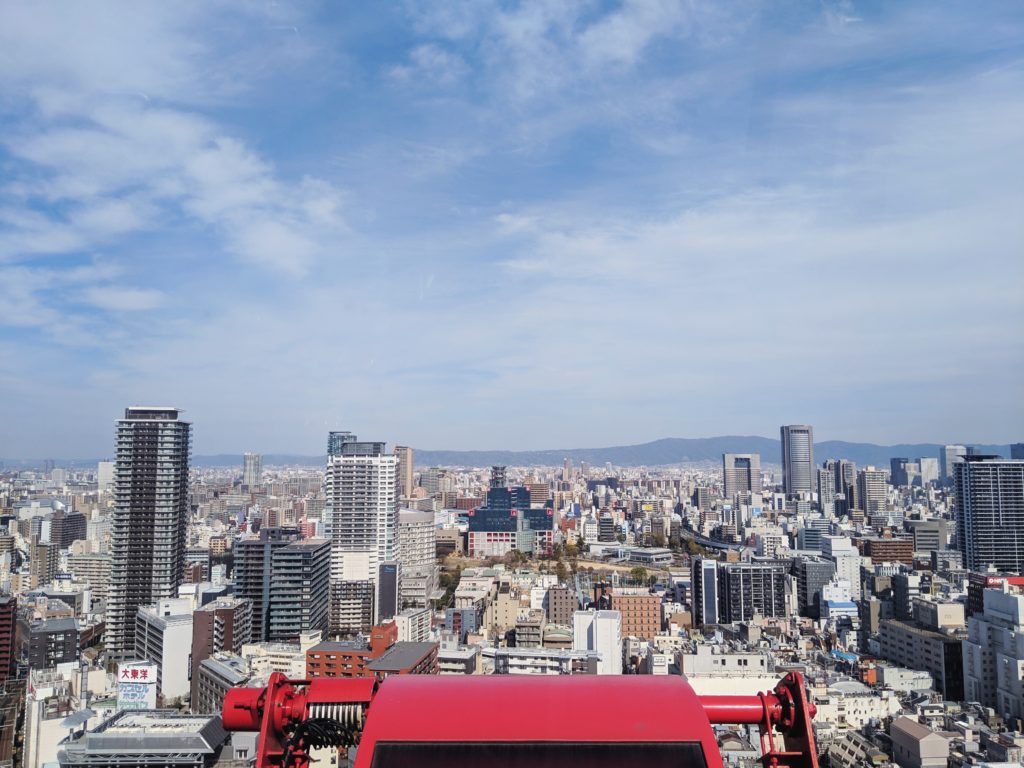
Minami/Namba
The Minami (south) area of Osaka is the center of nightlife, shopping, and restaurants. At night the area around the Dotonbori Canal glows neon and is full of life. Don’t forget to check out the famous Glico Man sign!
Dotonbori street is bustling with people and is full of the delicious street food Osaka is known for. If you are looking for luxury shopping, check out Midosuji. If you are looking for teenage fashion akin to Harajuku, check out Amerikamura!
Head south of Dotonbori to check out the Namba Yasaka shrine, which has a giant lion-head-shaped stage. Also, to the south, you can find the electronics district of Osaka, Den Den Town. Similar to Akihabara, Den Den Town is full of anime and manga.
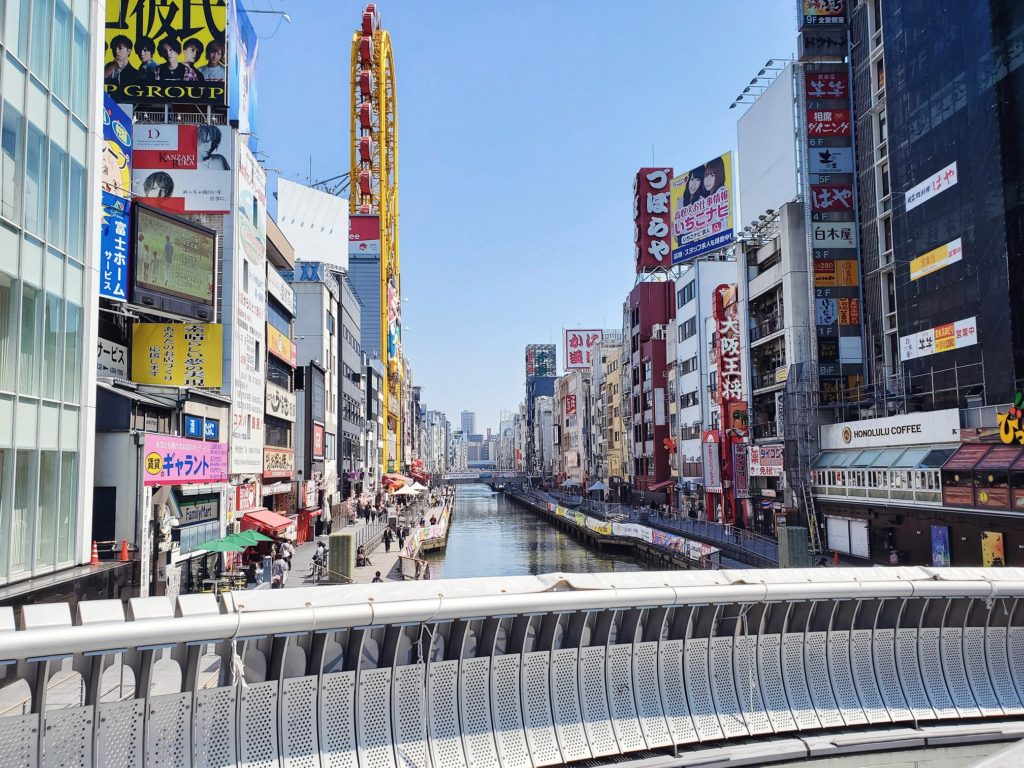
Universal Studios Japan & Osaka Aquarium Kaiyukan
Like Tokyo Disney, Universal Studios is an optional stop based on your preferences!
The Osaka Universal Studios is one of 5 Universal Studios parks and is currently the only park with Super Nintendo World. The park also often hosts limited-time attractions related to popular video game franchises or anime series. There will always be something new and exciting happening in the park.
The Osaka Aquarium is located in the same general area as Universal Studios Japan and can be paired together for a full day! The aquarium, once the world’s largest, houses 15 tanks representing the sea life of the Pacific Rim. Kaiyukan is most famously known for its Pacific Ocean tank featuring a whale shark.
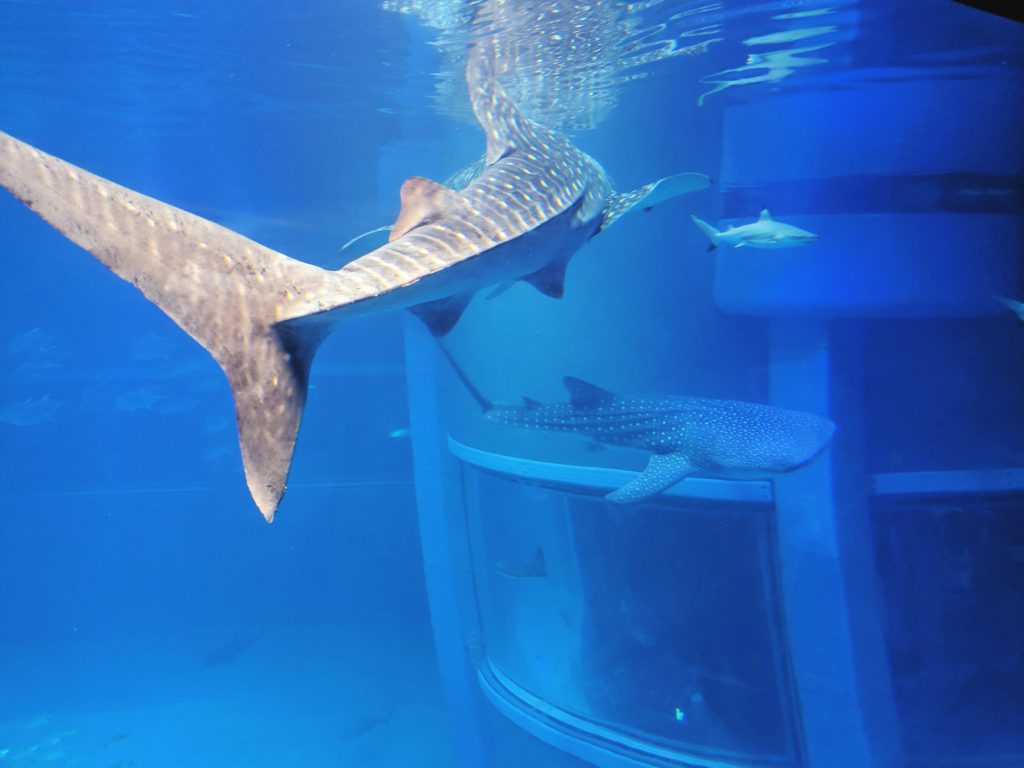
Osaka Castle
Osaka Castle is one of Japan’s most famous landmarks and a major tourist destination. The main tower is accessible to the public with a great view from the top. Multiple moats fortify the castle grounds. Arrive early to avoid crows as it can get busy during cherry blossoms and festival season.
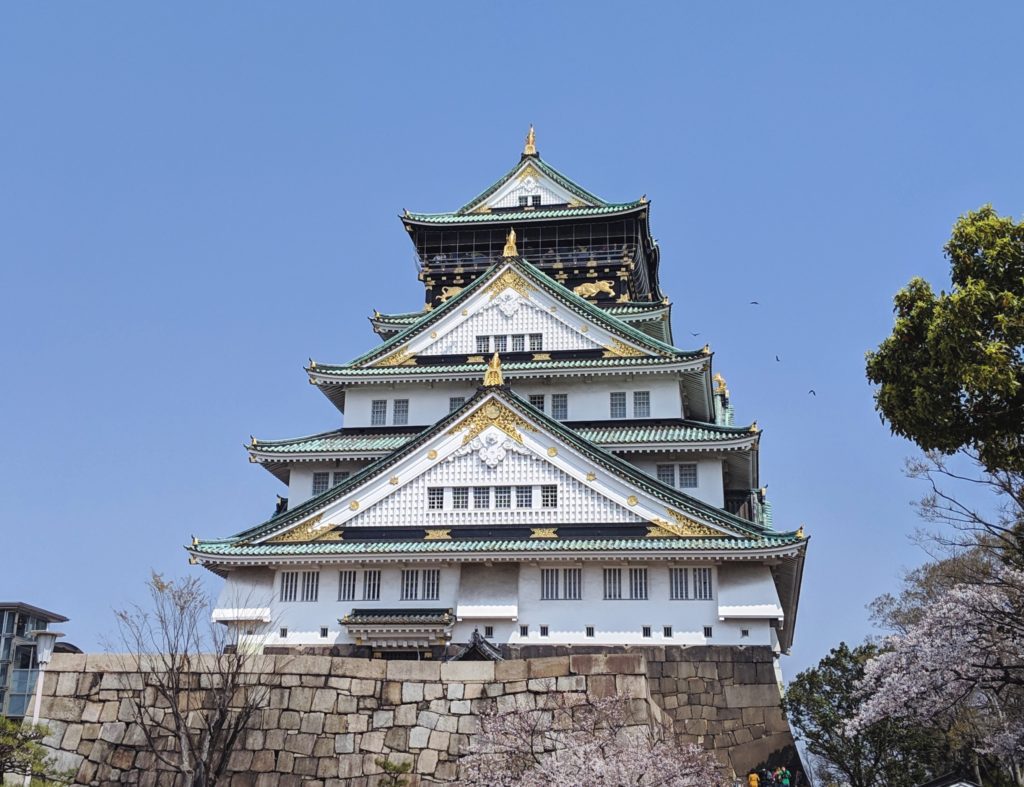
Bonus: Himeji & Nara
Himeji
Himeji is along the Shinkansen Route between Kyoto/Osaka and Hiroshima. If you can get an early Shinkansen out of Hiroshima, you can take a quick couple-hour stop in Himeji and see the Castle and surrounding park. The castle is just a short walk from the station, so you can put your luggage in a locker and take a quick pit stop!
Nara
Nara is a location that can be added as a part-day trip during your time in Kyoto or Osaka. I added it after visiting Fushimi Inari. There are a few great experiences that I consider can’t miss stops in Nara. Including Tōdaiji, a Buddhist temple with the largest bronze Buddha statue, Daibutsu.
You also don’t want to miss the deer in Nara park and the mochi-making demonstrations at Nakatanidou.
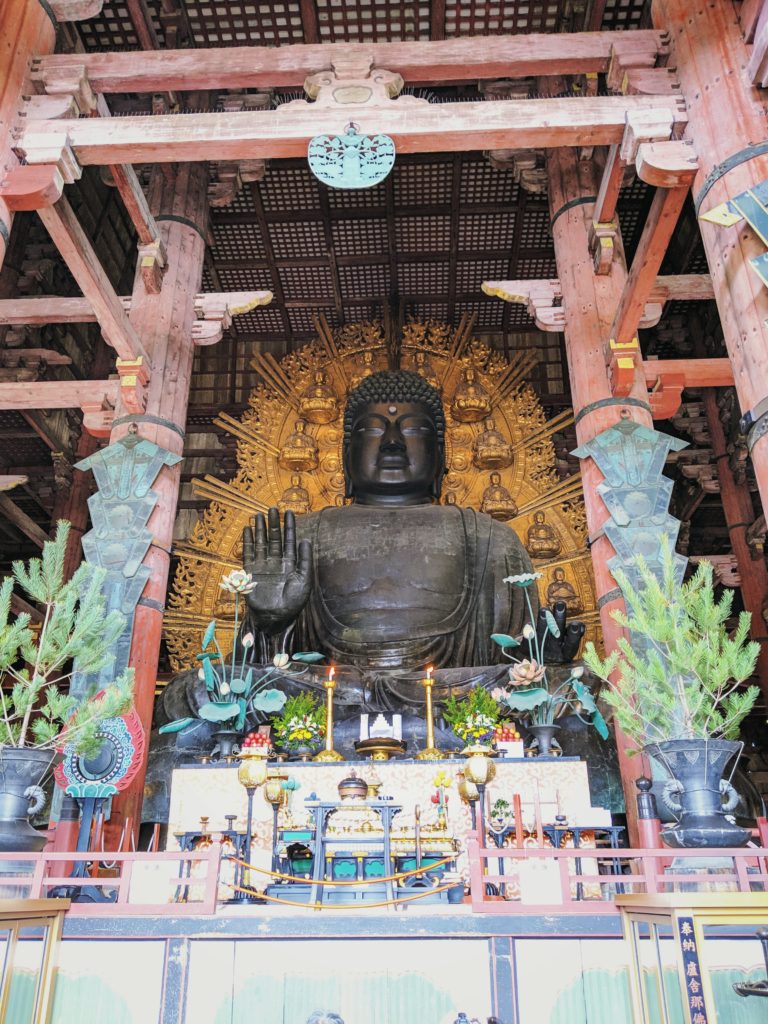
Helpful Tips
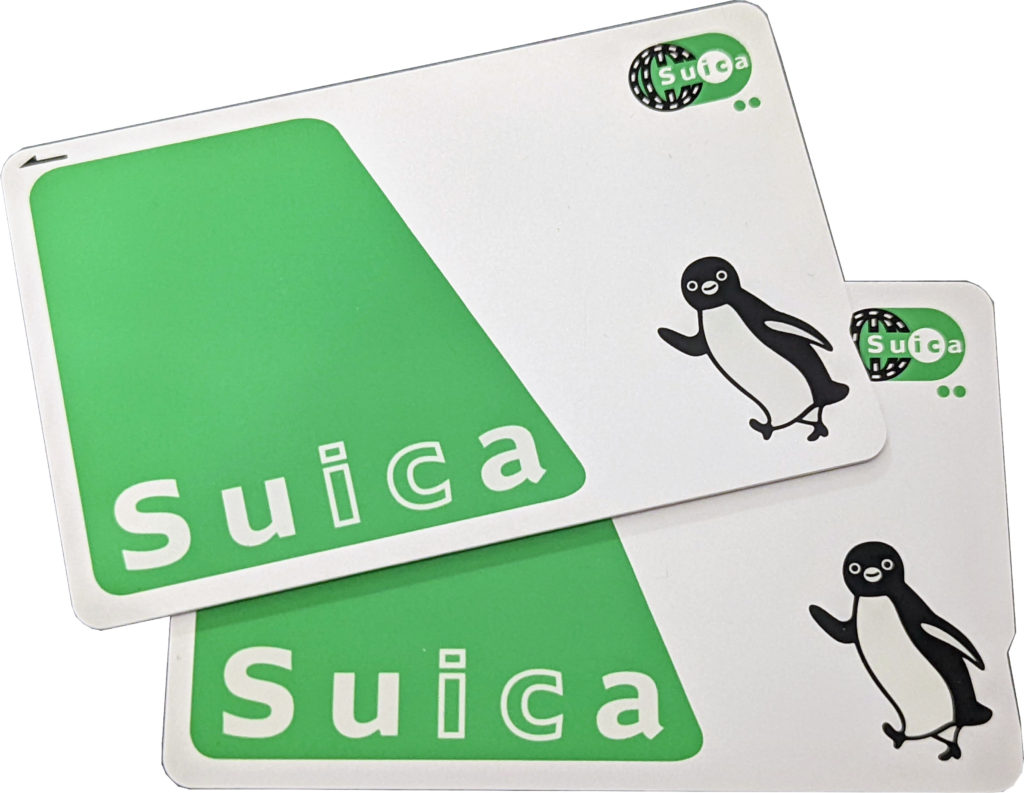
Prepaid Smart Cards
Pick up a rechargeable prepaid smart card—usually Suica or Pasmo. You can load money onto it and easily use it on the train lines rather than buying individual tickets. These passes can also be used to make purchases at convenience stores. Purchase a card at ticket machines in the train stations; you can get one right away at the airport.
Luggage Forwarding
Luggage Forwarding or Takkyubin service is incredibly common in Japan. If you don’t want to lug your large suitcase onto the Shinkansen, you can forward your luggage to the next location. Many hotels will help with this forwarding service, but it can also be done at convenience stores. For example, I had my hotel in Tokyo forward my luggage to Kyoto while we stopped in Hakone. I paid at the hotel front desk, and they took my luggage the night before while I kept a small bag with everything I needed before we reached Kyoto. The service is incredibly convenient and makes navigating the Shinkansen a breeze without large bags.
Luggage Lockers
Luggage Lockers can be found in most train stations across Japan and are a great place to leave behind large items during a day trip around a particular location. Make sure you memorize your locker and the closest exit to its location so you can easily find your luggage again (take a picture!). You can pay for your locker with your prepaid smart card!
Trash Cans
You may have trouble finding a trashcan during your time walking around Japan. Carry a small bag where you can place trash until you find a location to dispose of it. Check near vending machines or stop at a convenience store to get rid of any garbage you are carrying.
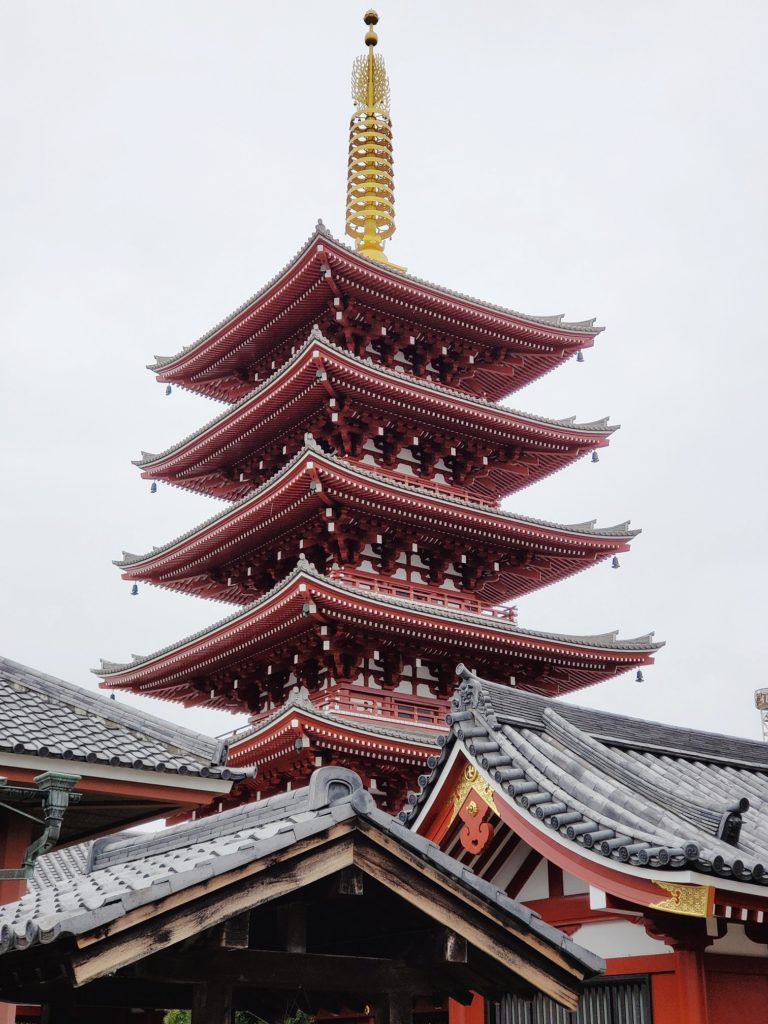
Day By Day Itinerary
This itinerary is similar to my 2019 itinerary. It is busy, but you see so many amazing things. Adjust for your arrival and departure times.
- Day 0: TOKYO – Arrive at Narita Airport (Evening)
- Day 1: TOKYO – Asakusa, Sky Tree, Ueno Park, Ameyokocho, Akihabara
- Day 2: TOKYO – Tokyo Station, Imperial Palace Gardens, Odaiba, Tokyo Tower, Roppongi
- Day 3: TOKYO – Meiji Shrine, Yoyogi park, Harajuku, Shibuya
- Day 4: TOKYO Tokyo Disneyland
- Day 5: TOKYO Tokyo Disney Sea
- Day 6: TOKYO – Studio Ghibli Museum, Shinjuku, Shinjuku Gyoen, Ikebukuro, Sunshine City
- *Day 7: TOKYO → HAKONE – Open Air Museum, Ropeway, Pirate Ship, Hakone Shrine, Ryokan
- *Day 8: HAKONE → KYOTO – Nishiki Market, Gion, Kiyomizu Dera
- *Day 9: KYOTO – Fushimi Inari, Nara, Nijo Castle
- *Day 10: KYOTO – Arashiyama, Ginkakuji, Philosophers Path, Higashiyama Jisha
- *Day 11: KYOTO → HIROSHIMA – Peace Memorial Museum, Peace Memorial Park, Hiroshima Castle
- *Day 12: HIROSHIMA/MIYAJIMA – Itsukushima Shrine, Ropeway, Hiking, Floating Torii
- *Day 13: HIROSHIMA → OSAKA – Dontonbori, Nipponbashi, Namba Yasaka Shrine, Shinsekai
- Day 14: OSAKA – Osaka Castle, HEP 5 Ferris Wheel, Umeda Sky Building
- Day 15: OSAKA – Osaka Aquarium, Departure from Kansai Airport (Evening)
* Active 7-day JR Rail Pass
…

